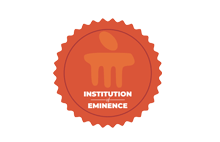Biosensing of Alpha-Fetoprotein: A Key Direction toward the Early Detection and Management of Hepatocellular Carcinoma
Document Type
Article
Publication Title
Biosensors
Abstract
Hepatocellular carcinoma (HCC) is currently one of the most prevalent cancers worldwide. Associated risk factors include, but are not limited to, cirrhosis and underlying liver diseases, including chronic hepatitis B or C infections, excessive alcohol consumption, nonalcoholic fatty liver disease (NAFLD), and exposure to chemical carcinogens. It is crucial to detect this disease early on before it metastasizes to adjoining parts of the body, worsening the prognosis. Serum biomarkers have proven to be a more accurate diagnostic tool compared to imaging. Among various markers such as nucleic acids, circulating genetic material, proteins, enzymes, and other metabolites, alpha-fetoprotein (AFP) is a protein marker primarily used to diagnose HCC. However, current methods need a large sample and carry a high cost, among other challenges, which can be improved using biosensing technology. Early and accurate detection of AFP can prevent severe progression of the disease and ensure better management of HCC patients. This review sheds light on HCC development in the human body. Afterward, we outline various types of biosensors (optical, electrochemical, and mass-based), as well as the most relevant studies of biosensing modalities for non-invasive monitoring of AFP. The review also explains these sensing platforms, detection substrates, surface modification agents, and fluorescent probes used to develop such biosensors. Finally, the challenges and future trends in routine clinical analysis are discussed to motivate further developments.
DOI
10.3390/bios14050235
Publication Date
5-1-2024
Recommended Citation
Ramachandran, Lohit; Abul Rub, Farah; Hajja, Amro; and Alodhaibi, Ibrahim, "Biosensing of Alpha-Fetoprotein: A Key Direction toward the Early Detection and Management of Hepatocellular Carcinoma" (2024). Open Access archive. 10433.
https://impressions.manipal.edu/open-access-archive/10433


